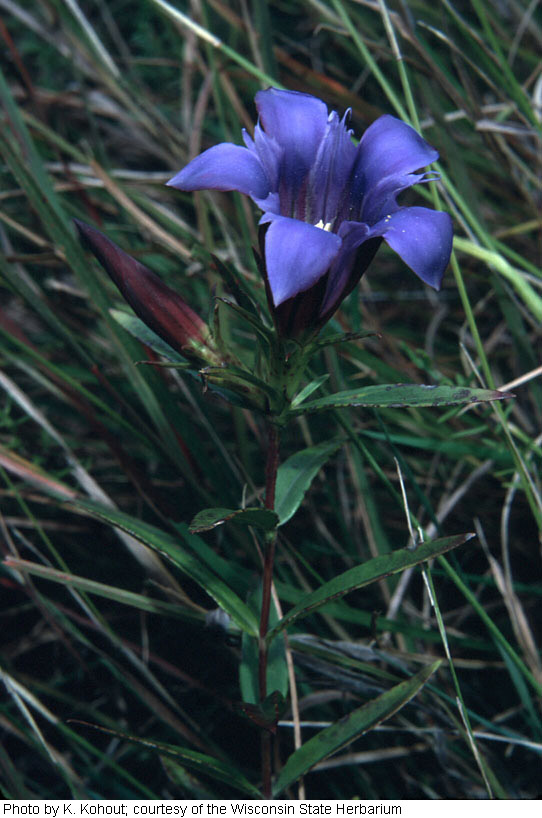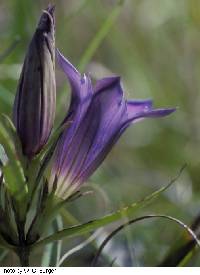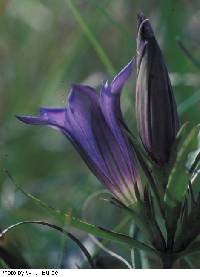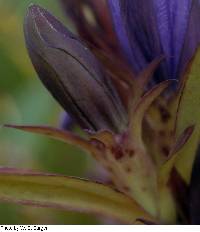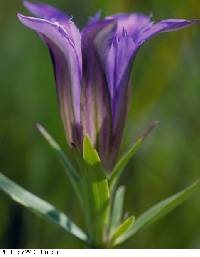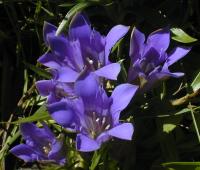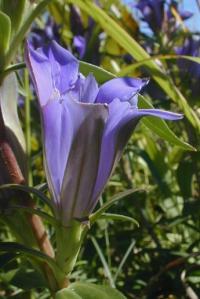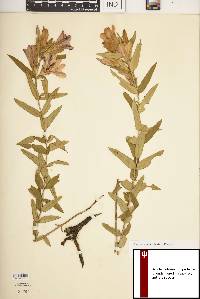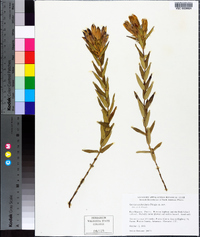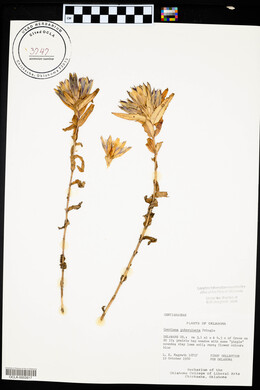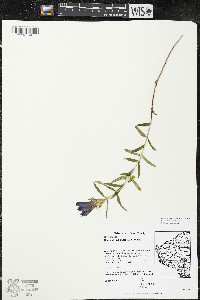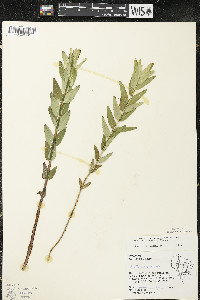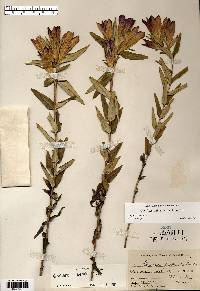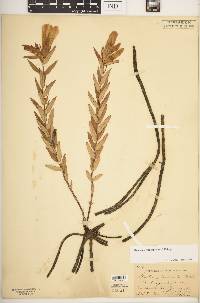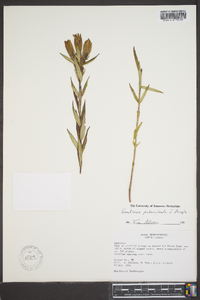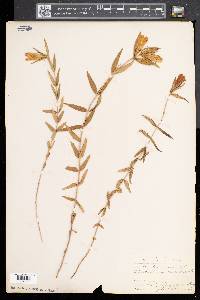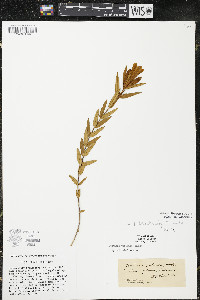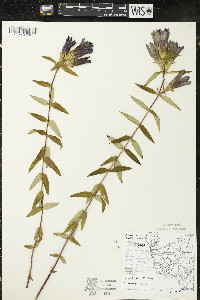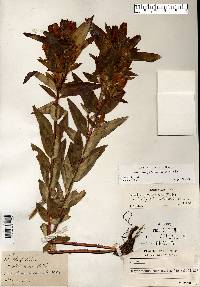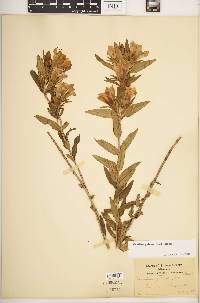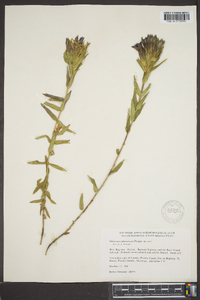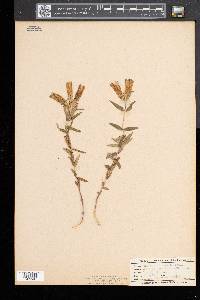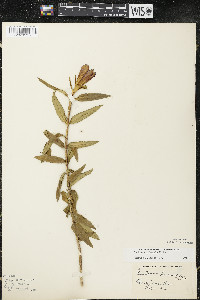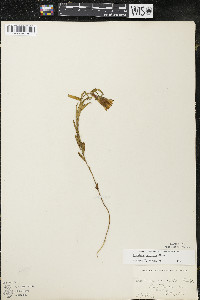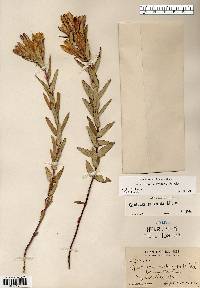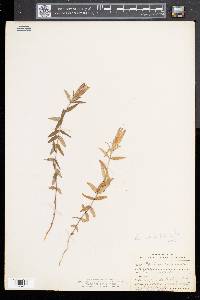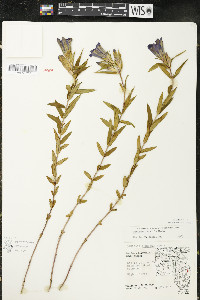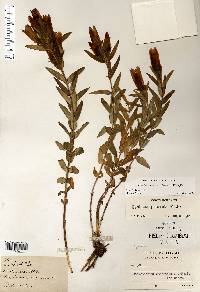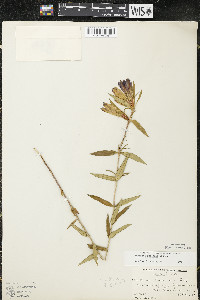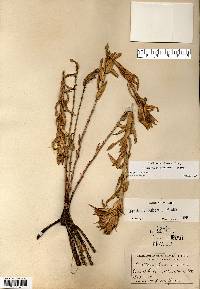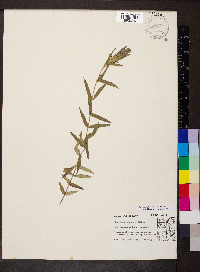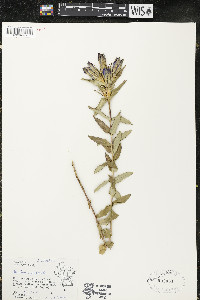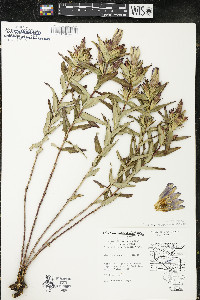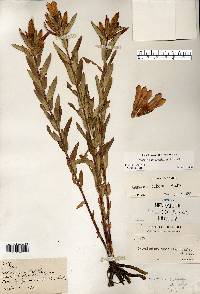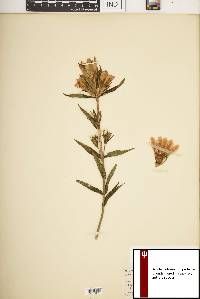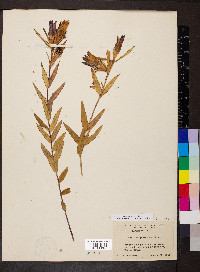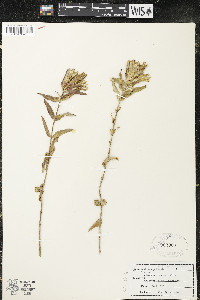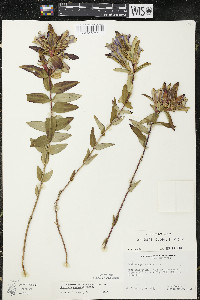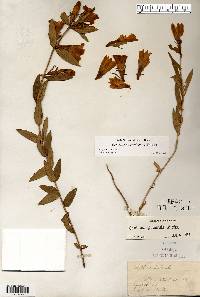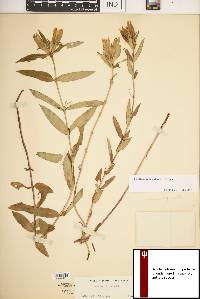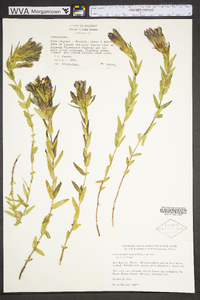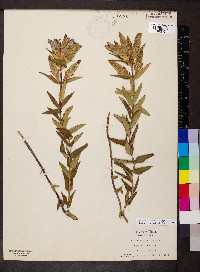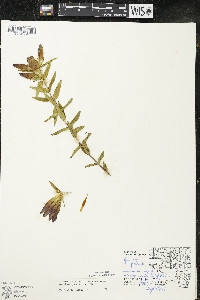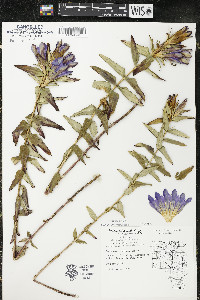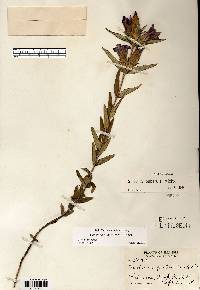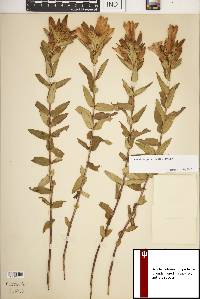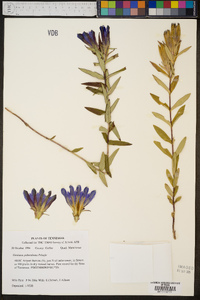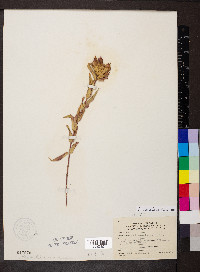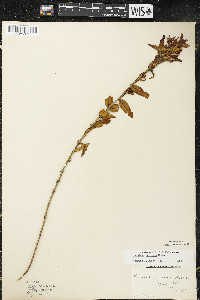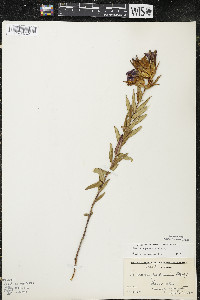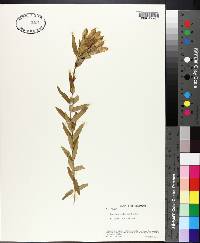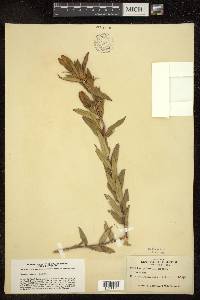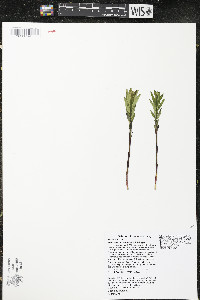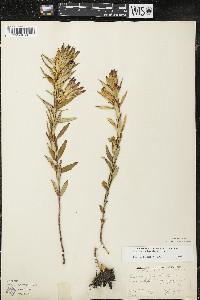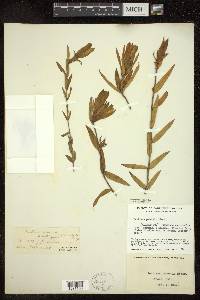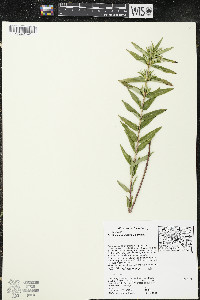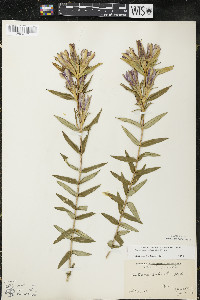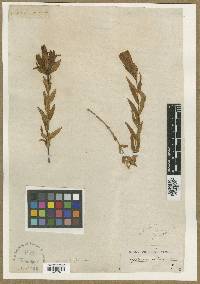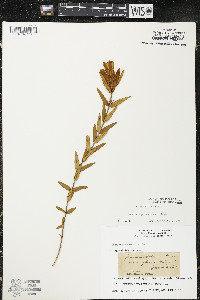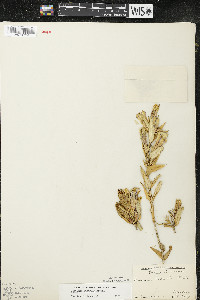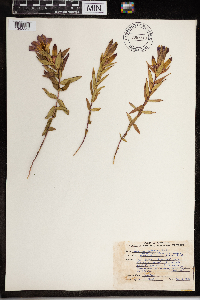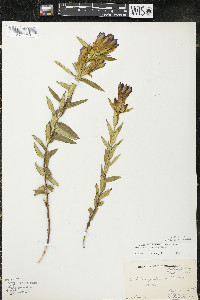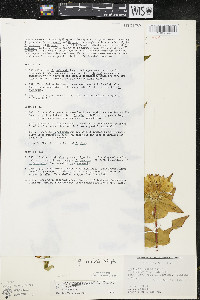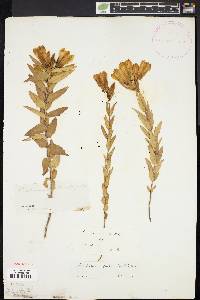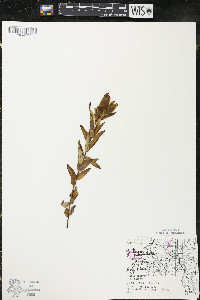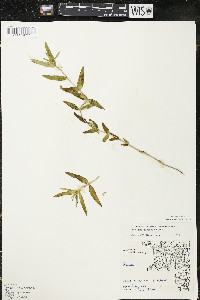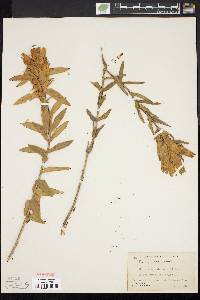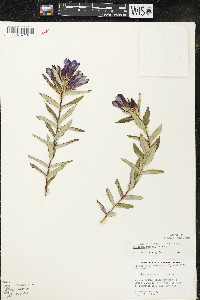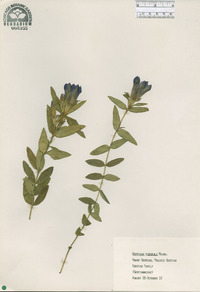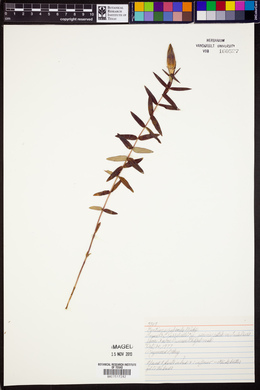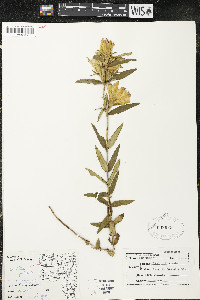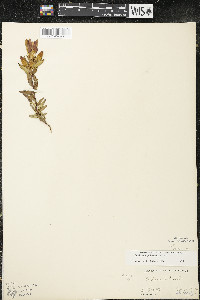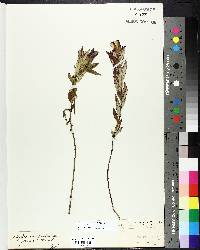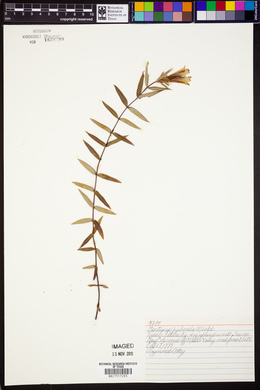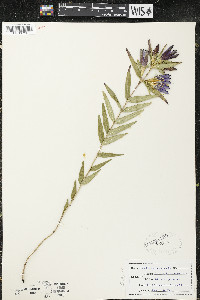Gentiana puberulenta
|
|
|
|
Family: Gentianaceae
Downy Gentian
[Gentiana puberula Franch.] |
Perennial herb 10 - 60 cm tall Leaves: opposite, stalkless, light green, firm, 1-nerved, 1.5 - 8 cm long, 0.4 - 2 cm wide, oblong to lance-shaped or occasionally almost linear, widest near the base, tapering above the middle to the tip, with non-toothed, but rolled under edges. The leaves are fairly hairless except for bristles along the edges near the base, and minute hairs along the underside of the midrib. Going down the stem, the leaves become gradually smaller, with the lowest leaves reduced to scales. Inflorescence: of one to six, often stalkless, erect flowers clustered at the stem apex, and often also in the axils of the upper leaves, or additionally at the ends of short branches. The terminal inflorescence is normally subtended by a pair of large, leaf-like bracts. Flowers: blue with tints of greenish purple, 3 - 6 cm long, radially symmetric, vase-shaped, opened at maturity, and subtended by two linear bracts. Sepals: five, but fused into a 0.7 - 1.8 cm long tube, then separating into very narrow, linear, 0.4 - 2.0 cm long, 1 - 3.5 mm wide, minutely toothed lobes. The sepal tube is hairless except along the main veins, and the lobes are minutely hairy on the midribs. Petals: five, but fused with obviously shorter membranes (plaits) between the spreading, 4 - 10 mm wide, egg-shaped, shallowly toothed lobes with abruptly pointed tips. The separate portion of the petal lobes reaches 0.6 - 1.4 cm beyond the 2.5 - 6 mm long, shallowly two-cleft, toothed or fringed plaits. The base of the petal tube is quite colorless except for greenish veins, but upwards it turns deep blue, with the free parts of the petal lobes and plaits also deep blue, but upper parts of the outside of the petal tube and lobes are also tinted with greenish purple. Stamens: five, attached to the inside of the petal tube, the filaments 1 - 1.6 cm long, with the anthers separate from each other. Pistil: with a single-chambered, superior ovary; a short, stout style; and a two-lobed stigma. There is a whorl of nectar glands present around the base of the ovary, though they are not attached to the fused petal tube base. Fruit: a single-chambered, two-valved, elliptic capsule with numerous seeds. Stems: one to five, erect or slightly decumbent, mostly unbranched, copiously covered with short hairs (sometimes in long lines, especially on the stem angles). Seeds: flattened, winged, and smooth. Similar species: Aside from Gentiana puberulenta, the only other gentian in our area with stalkless, five-petaled, deep blue, open flowers is its hybrid with G. andrewsii, G. x billingtonii. The hybrid differs by having wider (more than 5 mm) and longer sepal lobes. Albino forms of G. puberulenta do occur, but they are clearly different from the always whitish-flowered species,G. alba, because that species has non-hairy stems and leaves (especially smooth leaf margins), almost closed flowers (or at least without spreading lobes), and the anthers are fused together. Flowering: August to October Habitat and ecology: Occasional in mostly dry prairies and prairie remnants, gravel hill prairies, sandy areas with a wet and dry seasonality, and less commonly in dry upland woods. Occurence in the Chicago region: native Notes: The frequency of this species decreases in areas where grazing by livestock occurs. Etymology: Gentiana is named after Gentius, king of Illyria, who supposedly discovered a medicinal value for the yellow gentian. Puberulenta derives from the Latin word referring to hairiness. Author: The Field Museum Stems 2-6 dm, mostly simple, minutely papillate-puberulent, often to some extent in lines; lvs firm, lanceolate or lance-oblong, mostly 2-7 נ0.5-2 cm, tending to be minutely scabro-ciliolate or papillate-ciliolate along the margins toward the base only, and along the midrib on the lower side toward the base only; cal glabrous or very nearly so, its lobes linear or lance-linear, 4-18 mm; cor bright blue, 3.5-6 cm, wide open, the free lobes, above the fimbriate and shallowly bifid plaits, 4-8 mm, broadly ovate or elliptic, acute or abruptly acuminate, ±spreading; anthers separate; 2n=26. Prairies and dry upland woods; w. N.Y. to Man. and N.D., s. to W.Va., Ky., n. Ark., and Kans.; La. Aug.-Oct. (G. puberula, misapplied)
The closely related cordilleran sp. G. affinis A. Gray has been reported from n. c. Minn. and Huron Co., Ont. It differs in its smaller cor (mostly 2.5-4 cm) and unstable cal, the lobes variously large or small, commonly unequal, sometimes virtually suppressed, the tube often once or twice cleft especially when the lobes are reduced. The lvs are also a little more definitely scaberulous-margined ±throughout their length. Gleason, Henry A. & Cronquist, Arthur J. 1991. Manual of vascular plants of northeastern United States and adjacent Canada. lxxv + 910 pp. ©The New York Botanical Garden. All rights reserved. Used by permission. From Flora of Indiana (1940) by Charles C. Deam This is supposed to be a prairie plant. Infrequent to very rare in moist, black, sandy soil in the open, usually along roadsides and railroads and in fallow fields, low open woods, and marshes. In two different years I made a collection of this species on an open, rocky, black and post oak slope of the high hill at Stewart's Landing about 3 miles east of Elizabeth in Harrison County. This seems to be an unusual habitat but it was associated with other prairie plants such as Liatris, Viola pedata, and Andropogon furcatus. Very rare here. ...... Indiana Coefficient of Conservatism: C = 10 Wetland Indicator Status: N/A |
|
|
|

